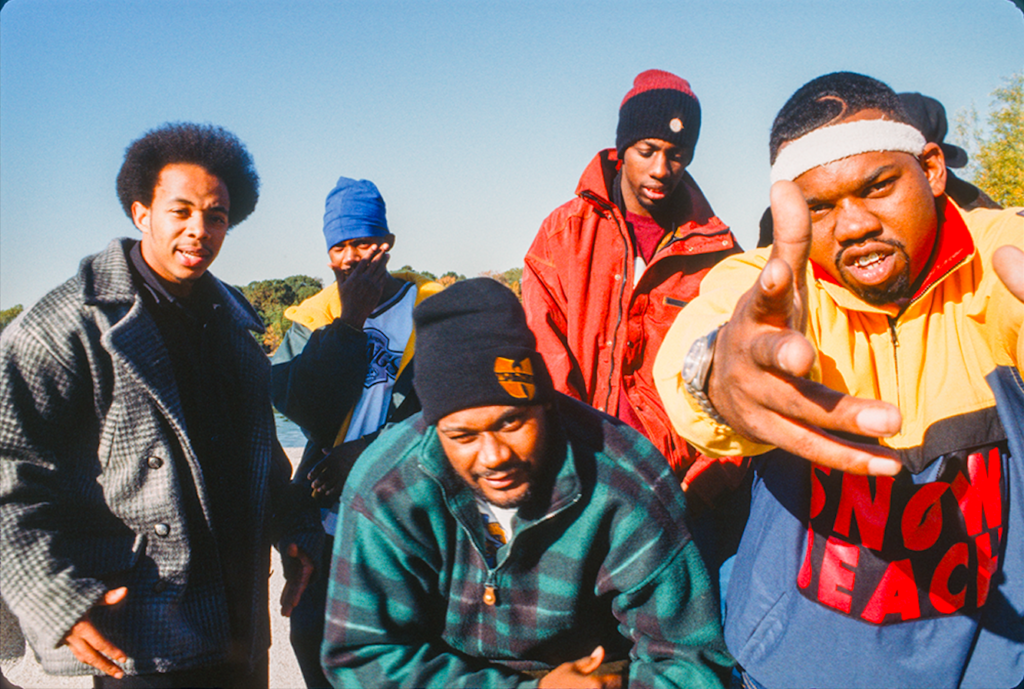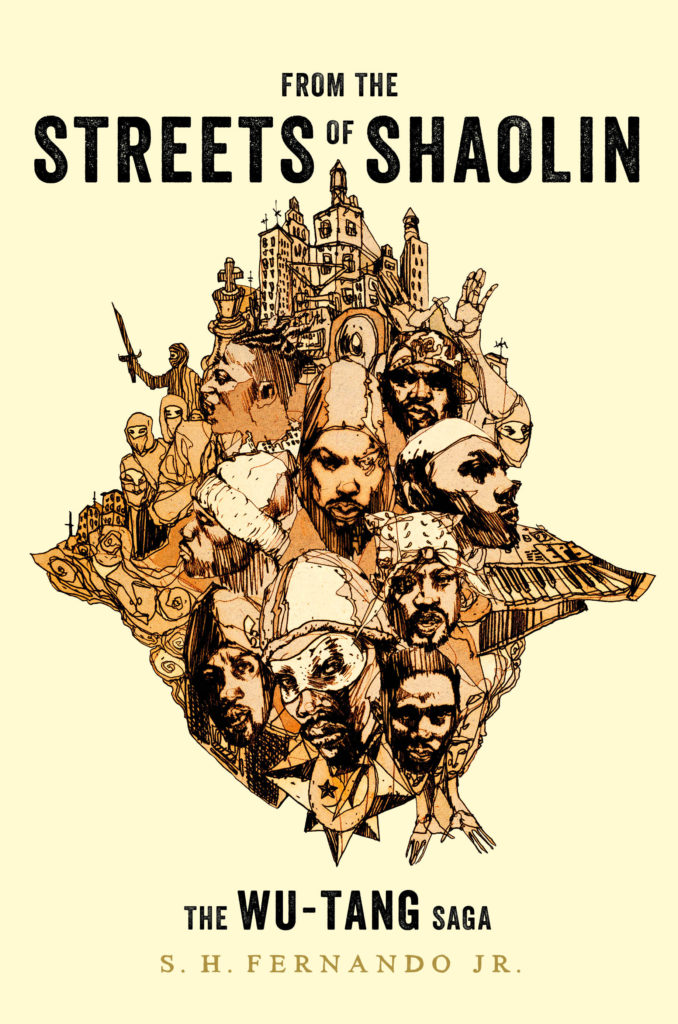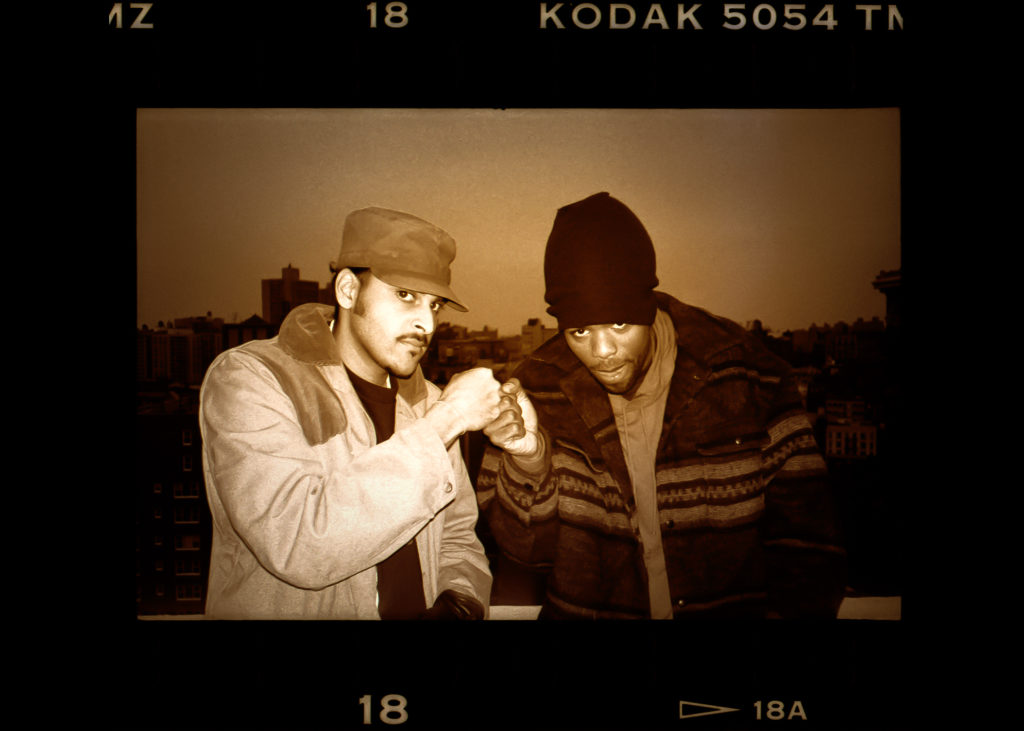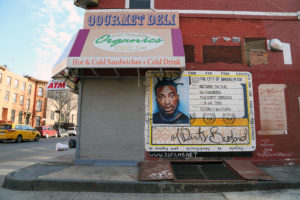It feels like the Wu-Tang Clan has been around forever, and their rise to fame is certainly a well-documented one.
Between group member autobiographies (RZA’s Wu-Tang Manual and The Tao of Wu, U-God’s Raw, Buddah Monk’s ODB The Dirty Version, Raekwon’s From Staircase to Stage) and documentaries (Showtime’s Wu-Tang Clan: Of Mics and Men and Hulu’s Wu-Tang: An American Saga) it might be assumed that every angle of the Clan’s story has been examined. The epic From the Streets of Shaolin: The Wu-Tang Saga (Hachette Books) proves that is decidedly not the case.

Billed as “the most three-dimensional portrait of Wu-Tang to date,” this revelatory book is the work of S.H. Fernando, a golden-era hip-hop journalist present for some of the Clan’s most legendary studio sessions, video shoots and random hangouts. Some pretty real deal stuff, but best of all, Fernando even voices characters in some classic Wu album interludes — a serious qualifier for Clan fans.
Along with unpublished interviews and first-person anecdotes, From the Streets of Shaolin‘s unique draws include close looks at the grindhouse kung fu flicks that define the crew’s creative world, fascinating insights into their impenetrable world of slang, and best of all, deep dives into the most respected albums in the Wu canon. From exploring the samples for each RZA beat, to how they were produced and with what equipment, Fernando unrolls the type of holy grail secrets producers and fans have been waiting decades for.
SPIN: Old martial arts movies played an epic role in so many Wu-Tang Clan member names, songs and album titles. How did the group’s fascination with these begin?
S.H. Fernando: RZA was a serious fanatic of the flicks, so much so that he and Dirty as young kids, around nine or 10, used to cut school and frequent the sleazy theaters in Times Square that screened them. Then in the early ‘80s, Channel 5 in New York City would play kung fu films on their “Drive-In Movie Series” that aired on Saturday afternoons — it was almost like a rite of passage for kids growing up in New York. These movies and their themes resonated especially within the black and Hispanic communities, so it was only natural that RZA and company would turn to them for inspiration as well as their names.
For example, Ason Unique got his name from the movie Old Dirty and The Bastard, where the main character was this old drunken monk who was good at kung fu. Ghostface Killah was one of the illest villains from the movie The Mystery of Chessboxing, and Dennis Coles (aka Tony Starks) had that rep on the streets of Shaolin (Staten Island). There was even a movie whose alternative title was Method Man, and Masta Killa was the alternative title of the big one, The 36 Chambers of Shaolin, which Wu’s debut album pays homage to. All these names pertained to aspects of each individuals’ personality, and it was pretty much RZA who gave the guys these monikers.
You make a great comparison between RZA and Thelonious Monk in the book, whom RZA has actually sampled. Could you elaborate on that?

 Monk was considered one of the originators and innovators of bebop and his style played heavily with dissonance or the clashing of harmonies. In the same way, RZA kind of introduced a dissonant element to hip-hop. His beats weren’t always “on beat” because they weren’t quantized or programmed to a metronome, and he really played with noise as a musical element as well. Basically, he was schooling our ears to something new, and he always had one element of a track that was out of whack.
Monk was considered one of the originators and innovators of bebop and his style played heavily with dissonance or the clashing of harmonies. In the same way, RZA kind of introduced a dissonant element to hip-hop. His beats weren’t always “on beat” because they weren’t quantized or programmed to a metronome, and he really played with noise as a musical element as well. Basically, he was schooling our ears to something new, and he always had one element of a track that was out of whack.
[RZA] was a huge fan of Monk and really looked hard for that 1988 documentary Straight, No Chaser, which is about Monk. And you can see the influence in RZA’s early work where he uses a lot of piano riffs that he played himself. So, not only did he sample Monk, but he was inspired to become a musician by seeing Monk, who really proved that there were no rules to any of it. RZA applied that same concept to hip-hop.
Could you touch on the Islamic Five Percenter way of life and how heavily that influenced Wu-Tang, both musically and personally?
Since their heyday in the ‘70s and ‘80s that coincided with the rise of hip-hop, the Nation of Gods and Earths had a huge impact on hip-hop. So much of hip-hop slang, like “bomb,” “show and prove,” “word is bond” and using “peace” as a greeting came from the Five Percenters. I compare it to the influence of Rastafarianism on reggae music. It provided a kind of spiritual underpinning that made the music much more than simply entertainment.
Just the whole concept of thinking of yourself as God is so empowering in the first place, and all the Wu-Tang members took that to heart. It helped them personally deal with the trials and tribulations of ghetto life. When you’re a young Black man growing up underprivileged and it seems like the whole world is stacked against you, “knowledge of self,” as they call it, makes you the creator of your own destiny and not simply a victim of circumstance.

What is some of the craziest slang you ever encountered being around the group — did it ever get to the point of “what the hell are these guys talking about”?
I was totally unfamiliar with Supreme Mathematics and the Supreme Alphabet of the Five Percenters when I first encountered Wu-Tang, so a lot of what they were saying went straight over my head. Especially if they didn’t want you to understand what they were saying they would bust out in Five Percent lingo. For example, Ghost says on a track, “I was going to get my culture cipher.” Well, what’s a culture cipher? Culture is four in Supreme Mathematics, and Cipher is zero, so that would be “40” which means a 40-ounce beer. His preferred brand is usually Olde English 800.
At the time, I actually went as far as going to the former Allah school in Harlem, which was the old Five Percenter headquarters. I told a guy in a wheelchair sitting outside that I was interested in joining just so I could decode some of their slang. The old guy gets up out of his wheelchair, goes into what I thought was an abandoned building and returns with a cassette. He gives it to me and says cryptically, “Memorize everything on this tape first and then come back and I’ll give you more.” The tape turned out to be part of the Supreme Wisdom lessons of the Five Percent which starts out with a section called Actual Facts, including information like how far is the Earth from the sun and stuff like that.
I did eventually get to find out about Supreme Mathematics and the Supreme Alphabet and both opened up a whole new world as far as deciphering [Wu’s] lyrics and understanding what they were saying. Plus, these guys were all slang masters, anyway; you had to be real quick to keep up with what they were saying.
Many people who spent time around “doomed” rock stars like Jim Morrison and Kurt Cobain report feeling a sense of inevitable destruction. Did you feel this around Old Dirty Bastard?

I used to run into Dirty on the street a lot in the early days because I lived in Brooklyn and he was always around in the community. He was always so down-to-earth and funny, which is what people loved about him. But like most people I had no idea he had a substance abuse problem. I just thought he was a unique, free-spirited individual — which he was — but, I think once fame allowed him easy access to drugs and he developed a habit it grew into a serious problem. It really happened step-by-step and didn’t have to go down like that. Anywhere along the line, he could have been saved from the eventual outcome, so he is really a cautionary tale.
An extensive amount of people in the Wu-Tang music and business organization are actually related, maybe more so than any other professional music camp. Throughout all extended branches of the Wu family tree, how many relatives are there?
Well, the core of the group was always RZA and his two cousins, GZA and ODB. GZA’s mom and RZA’s mom are related — I believe cousins — and RZA’s grandmother, Mae, is ODB’s father’s sister, so ODB and RZA’s mom were actually first cousins. Then you have Popa Wu, who is ODB’s older cousin on his mother’s side. After that, it gets kind of complicated since all of these guys have huge extended families, and cousins are considered more like brothers and sisters. RZA himself has 10 siblings and his older brother Divine ran Wu-Tang Management from the beginning.
Then, apart from blood relations, you have many of the Clan members’ mothers knowing each other for a long time through living in the projects. Ghost used to go out with one of RZA’s sisters and has at least one child with her. So, the connections do go deep, but that’s why this crew is so tight. No matter how much they fight, they will always be family at the end of the day. So, Wu-Tang really is forever.

Leave a comment